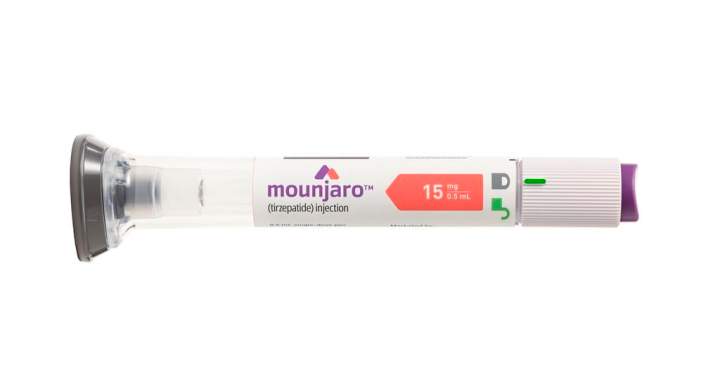The email notification pinged while I was photographing orca pods near Victoria. “Sorry to break this to you,” texted Marissa, a Vancouver endocrinologist I’ve known since university. “Several of my patients just lost access to their diabetes medications. The weight loss craze is hitting healthcare hard.”
Three days later, I’m sitting across from Dale Chen in a small East Vancouver apartment. At 57, he’s managed Type 2 diabetes for nearly two decades with a combination of lifestyle changes and medication. His kitchen counter holds a row of orange prescription bottles – except one is missing.
“They told me there’s a shortage,” Dale says, hands slightly trembling as he checks his blood glucose levels. “The pharmacy couldn’t fill my Ozempic prescription last week. They don’t know when they’ll have it again.”
Dale isn’t alone. Across British Columbia, diabetes patients are discovering their long-prescribed medications are increasingly difficult to access, as Health Canada confirms significant shortages of GLP-1 receptor agonists – medications that help regulate blood sugar levels in people with Type 2 diabetes.
The culprit? The same drugs have gained explosive popularity for weight loss.
“What began as whispers among clinicians last year has become a full-blown healthcare crisis,” explains Dr. Lisa Nguyen at St. Paul’s Hospital’s diabetes clinic. “These medications were developed for diabetes management, but their effectiveness for weight loss has created unprecedented demand.”
The numbers tell a striking story. BC PharmaCare data shows prescriptions for drugs like semaglutide (sold as Ozempic) and liraglutide (Saxenda) have increased by over 300% since 2020. Meanwhile, Health Canada’s drug shortage database now lists most GLP-1 medications as “actual shortage” status with unknown resolution dates.
For Dale, the consequences are immediate and concerning. “My A1C was finally under control after years of struggle,” he says, referring to the blood test measuring average blood sugar. “Now I’m back to square one, piecing together alternatives with my doctor.”
The shortage highlights a growing tension in healthcare systems worldwide – when medications serve multiple purposes, who gets priority access?
At Vancouver General Hospital’s diabetes clinic, endocrinologist Dr. Tom Williams spends increasing amounts of time navigating these ethical waters. “We’re seeing diabetes patients who’ve been stabilized on these medications for years suddenly forced to switch treatments because supplies are being diverted to weight management,” he explains during a brief break between patients.
According to BC’s College of Physicians and Surgeons, the province has implemented new restrictions requiring physicians to document specific criteria when prescribing these medications. Diabetes Canada has called the situation “deeply concerning,” noting that interruptions in treatment can lead to serious complications including cardiovascular events, kidney damage, and poor wound healing.
Walking through Vancouver’s Downtown Eastside with community health worker Joanne Ramos, the impact becomes visible in unexpected ways. “We have clients with limited healthcare access to begin with,” she says. “When their diabetes medication suddenly becomes trendy for weight loss, they’re the first to lose out.”
The trend began accelerating when celebrities and social media influencers started openly discussing using these medications for weight loss. TikTok videos tagged with GLP-1 drug names have garnered millions of views, while Google searches for “Ozempic for weight loss” increased nearly 1,000% last year according to Google Trends data.
Back in his kitchen, Dale shows me a Facebook group where diabetes patients share strategies for finding their medications. “Someone drove to three different cities last week trying to fill their prescription,” he says. “Others are rationing doses to stretch supplies.”
Pharmaceutical companies claim they’re ramping up production. Novo Nordisk, the maker of Ozempic, told Health Canada they’re “working urgently to increase manufacturing capacity,” but acknowledged shortages may persist through 2023.
For physicians like Dr. Williams, the situation reflects larger questions about healthcare priorities. “These medications are life-changing for both populations – people with diabetes and those with obesity,” he acknowledges. “But we’ve created a system where those with more resources can access medications for weight loss while those who need them for diabetes management are left scrambling.”
BC’s Ministry of Health recently announced temporary coverage changes, prioritizing these medications for diabetes patients while limiting coverage for weight loss. But pharmacists report that private insurance and out-of-pocket purchases continue to strain supplies.
Indigenous communities face particular challenges. At the Urban Native Health Centre in Vancouver’s East Hastings area, nurse practitioner Samantha Wilson describes compounding barriers. “We serve a population with disproportionately high diabetes rates who already face systemic barriers to care,” she explains. “These shortages add another layer of health inequity.”
As I prepare to leave Dale’s apartment, he checks his glucose monitor again. The numbers are higher than his target range. “I’ll adjust my diet today,” he says with practiced resignation. “But there’s only so much food changes can do without the medication.”
The next morning, my phone buzzes with another text from Marissa: “Just FYI – two more patients switched medications this week due to shortages. One ended up in emergency with glucose levels over 20. This isn’t sustainable.”
For Dale and thousands of British Columbians with diabetes, the collision of health needs and market trends isn’t just an inconvenience – it’s potentially life-threatening. As one frustrated endocrinologist told me before I left the hospital, “We’ve turned essential medicine into a luxury good. That was never the intention.”






